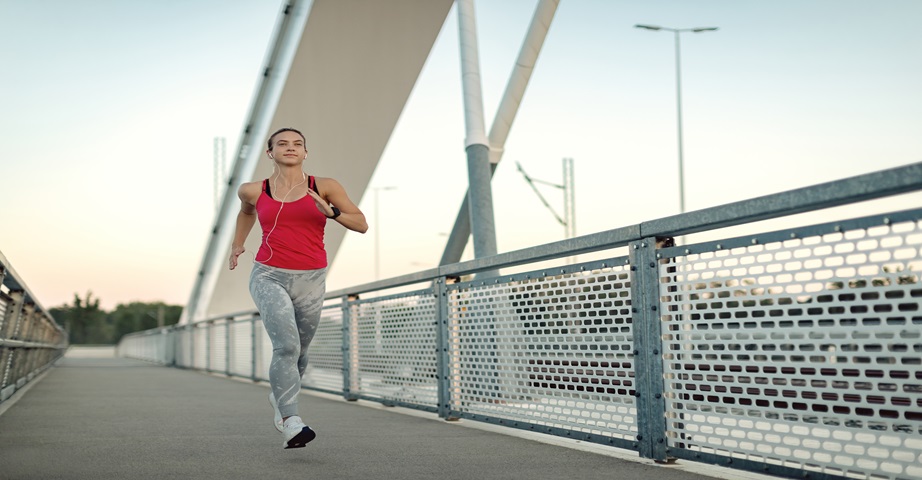Run/walk method - rules, effects and training plan

Run/walk method is a running interspersed with walking, which is a form of physical activity suitable for both beginner runners and people who are struggling with excessive body weight or with various types of diseases. It is a training unit that can strengthen muscles and joints, providing a gradual improvement in condition. Who can practice a walking interspersed with running? How to train the run/walk? What are the advantages of the run/walk?
Summary
Run/walk method - what is it?
Run/walk method is a form of physical activity, which is a run interspersed with a walk or a walk with elements of a run. This is a kind of effort that is less demanding than a classic run, but more intense than a traditional walk. During the run/walk method, the proportion between individual elements may vary, depending on the condition, skills and needs of the player.
Run/walk method - for who?
Run/walk method is an excellent form of physical activity for beginners who are just starting their adventure with running. This is a type of training that will gradually prepare the athlete's body for higher loads and more intense workouts focused around continuous running.
What's more, run/walk method is a great solution for obese people who are struggling with excessive body weight - walking interspersed with running does not burden the movement system to the same extent as continuous running. This is a type of effort that can also work among people who return to training after a long break, related to convalescence or injuries.
Run/walk method can also be helpful among people who are struggling with various types of diseases - it is a form of activity that weighs less on the joints and spine than traditional running. The run/walk can also be successfully used by advanced runners, preparing for long distances or mountain runs.
Recommended dietary supplements
Basic rules of the run/walk method - how to train run/walk?
In run/walk method, as in any type of physical activity, proper warm-up is crucial, which can reduce the risk of injuries during exercise. After the warm-up, you should go to the proper training, which is worth starting with the walk - the first trainings among beginners can be based only on the walk, and only during the following days and weeks of exercise you can introduce elements of the run during physical activity.
When starting the adventure with the run/walk method, it is worth gradually increasing the physical effort. The first workouts, lasting about 30 minutes, can be based on the proportion of 2 minutes of running for 8 minutes of walking. With each subsequent training, it is worth reducing the time of walking in favour of running, and when fatigue is not felt, it is also worth extending the total duration of activity.
During the exercises, you should focus on the correct posture of the body - during the walk the spine should be straightened, the shoulder blades gently pulled down, the shoulders lowered, and the hands raised to the height of the chest. You should also tighten the muscles of the buttocks and abdomen, and breathe in the air with your nose and let out with your mouth. While run/walk, you should not get short of breath - it may be a good idea to observe your heart rate and practice walking when your heart rate is too high, or running when your heart rate drops below a set value.
After the run/walk, it is worth remembering about stretching exercises that will calm the body, restore proper breathing and reduce the risk of injuries.
Run/walk method - training plan
When practising walk/run method, it is worth remembering about regularity. Take into account 3-4 run/walk in the weekly training plan, paying attention to the gradual extension of the duration of the run and shortening of rest in the form of walking, which will allow you to achieve controlled progress without the risk of overtraining. It is important not to start the adventure with run/walk from too intense runs or long training units - this can have a negative impact on the athlete's body, increasing the risk of pain, injuries and overload.
What can an exemplary run/walk training look like? Firstly, a warm-up should be performed - a quick 5-minute walk, ended with a series of general development exercises. Then you can go to the 30-minute proper training, starting with a 3-minute walk interspersed with a 4-minute run. After the run/walk, it is worth doing stretching exercises - 5 minutes of calm walking and exercises to relax the whole body.

Run/walk method - effects
Run/walk is a form of cardio exercise, which is an activity that allows intense fat burning. Variable intensity of effort means that both during and after the training, you can burn significant amounts of calories. Thus, the walk interspersed with running is willingly practised by people struggling with excessive body weight, because it can facilitate the process of weight loss and slim the figure.
Run/walk can cause muscle and joint strengthening, and can also contribute to improved condition. What's more, it is a type of physical exercise that allows the body to oxygenate and improve well-being. It is also a training unit that can be helpful in training technical skills, as well as in practising pace changes, which can be extremely important among long-distance runners.
Bibliography:
- https://www.researchgate.net/profile/Malgorzata-Pogorzelska/publication/284032078_Sposob_na_podstawe_programowa_wf/links/564b6af908aeab8ed5e751db/Sposob-na-podstawe-programowa-wf.pdf
- https://repozytorium.ur.edu.pl/server/api/core/bitstreams/4e9a36ed-226f-4df4-bef2-7ceb360c3d82/content#page=86
- https://www.magazynbieganie.pl/marszobieg-komu/

